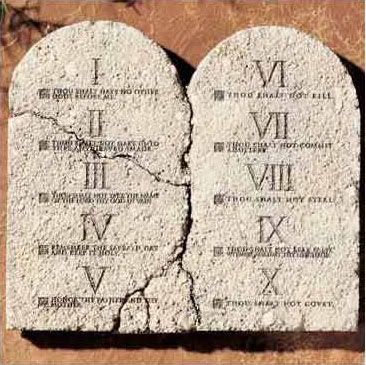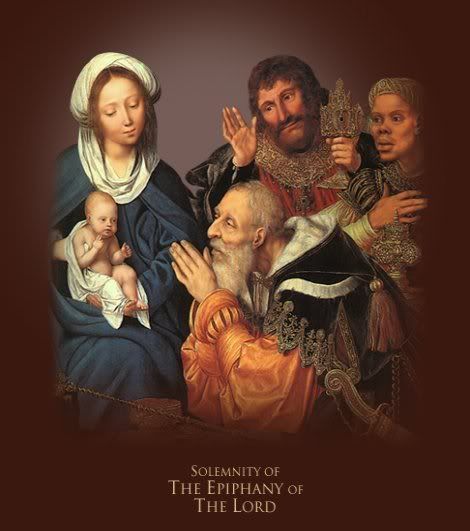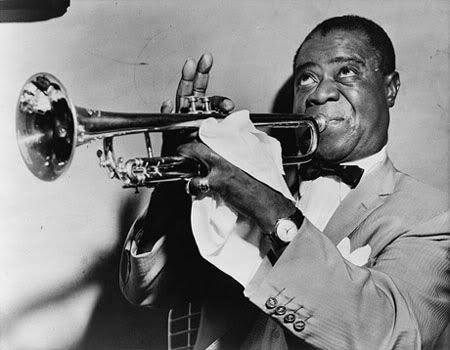Christian liturgy, ritual and most of Christian theology change little from year to year. The reason for the Christian Calendar is to encourage Christians to rehearse, ponder and reflect on, year after year, the life, death and resurrection of Jesus, the Christ, so that His life becomes part and parcel of our family history.
The story of Christ changes little, but we, His disciple, change and grow, become ill, or face death, our own or a loved one's, and in so doing we come each year to view the events of Christ and the traditons of His Church through different eyes, and we may see different, perhaps deeper meaning in God's message to us. Hopefully, what I write in this series will have a certain timelessness, updated slightly each year to improve clarity and thereby open more deeply our understanding of aspects of the events celebrated during the Christian Year.
This year the movable Holy Day known as Ash Wednesday is February 17. Ash Wednesday is the first day of the Season of Lent. Protestant Christians often don't know much about Ash Wednesday. Some know its the day that Catholics get that smudge on their foreheads. But, increasingly, in Protestant denominations, ashes are imposed.
For those who do not understand the symbolic importance of ritual and liturgy in worship, most of what is written from here on may seem odd; so I invite you to learn something with a positive and tolerant attitude, or to just avoid this post and move on to something you do enjoy.
Let's take a look at this uniquely Christian Holy Day, this Wednesday before the first Sunday in Lent, and take a bit of the mystery out of it.
First, what is it with the ashes? Biblically ashes are sometimes used in purification rites, but, much more commonly, in a rite of penitence. There are many scenes in the Bible telling of the tearing of garments and the heaping of ashes on oneself as a sign of repentance.
The ritual of the application of ashes on Ash Wednesday symbolizes this penitential recognition that we are but human and cannot live without God. This ritual has been used in the church since the tenth century.
After the Reformation most Protestant church denominations, while recognizing Ash Wednesday as a holy day, did not engage in the imposition of ashes. Many Anglican, Episcopal and some Lutheran churches did continue the rite, but it was mostly reserved for use in the Roman Catholic Church.
Because Ash Wednesday has been so poorly understood, I decided about 15 years ago to create a liturgy for the Ash Wednesday evening service that actually explains the origin of the day and the season of Lent.
A Service of The Word and Sacrament
[an asterisk * indicates that those who are able should stand. Pastor's words are in bold.]
Preludes
Introduction
Pastor: Let us pray. Almighty and everlasting God, you forgive the sins of all who are penitent: Create in us new and contrite hearts, that we, lamenting our sins and acknowledging our sinfulness, may obtain of you, the God of all mercy, perfect remission and forgiveness; through Jesus Christ, our Lord, who lives and reigns with you and the Holy Spirit, One God, for ever and ever. Amen.
A Reading from the Holy Scriptures [chosen by the pastor, often is Psalm 103]
* A Hymn of the Passion [ normally a hymn about the Cross of Christ]
* Our Confession of Sin [This long pastoral invitation to Confession concisely explains the ancient history of the season of Lent, the reason for the season, and the symbolism of the imposition of ashes. In most churches this information is not printed in the bulletin.]
Pastor:
Dear People of God: the first Christians observed with great devotion the days of our Lord’s passion and resurrection, and it became the custom of the Church to prepare for them by a season of penitence and fasting.
This season of Lent provided a time in which the converts to the faith were prepared for Holy Baptism. It was also a time when those who, because of notorious sins, had been separated from the body of the faithful were reconciled by penitence and forgiveness, and restored to the fellowship of the Church.
Thereby, the whole congregation was put in mind of the message of pardon and absolution set forth in the Gospel of our Savior, and of the need which all Christians continually have to renew their repentance and faith.
I invite you, therefore, in the name of the Christ, to the observance of a holy Lent, by self-examination and repentance; by prayer, fasting, and self-denial; and by reading and meditating on God’s Holy Word,.
And, to make a right beginning of repentance, and as mark of our mortal nature, to confess your sins and to receive the ashes of repentance.
Let us pray. Almighty God, you have created us out of the dust of the earth: Grant that our confession and the imposition of these ashes may be to us a sign our own mortality and penitence, that we may remember that it is only by your gracious gift that we are given everlasting life; through Jesus Christ, our Savior. Amen.
Let us now together confess our sin before God and one another.
All: Almighty God, maker of all things, judge of all people: we acknowledge and confess our manifold sins, which we from time to time have committed, in thought, word, and deed, against thy divine majesty. We do earnestly repent and are heartily sorry for these, our misdoings. The remembrance of them is grievous to us. Have mercy upon us, have mercy upon us, most merciful God; for the sake of our Lord, Jesus Christ, forgive us all our sins and grant that we may ever hereafter serve and please you in newness of life, to the honor and glory of your Name. Through Jesus Christ we pray. Amen.
* Pastoral Assurance of Pardon
* The Imposition of Ashes
[ The assembled congregants come forward to receive ashes. Imposition of ashes is optional in all Protestant churches. It was my experience that when the reasons for and symbolism of the ashes was explained almost all came forward. Those who could not come forward because of physical limitations were taken the ashes by the Pastor.
[This is the symbolic low point in the service. At this point, powerful symbolism, in which you participate, has pointedly reminded you of your coming, inevitable death.
For this reason every Ash Wednesday service I have ever lead ends with Holy Eucharist: (Eucharist means "thanksgiving;" it is also called "Communion" or the "Lord's Supper".)
The Holy Eucharist - Ritual for Year A*
[ # In most Protestant churches the children do not take Communion before they go through Confirmation at about age 12. I allow Communion by any child whose parents approve. However, since most parents will not allow it, I encourage all children to come and gather around the communion table for the beginning of the Eucharist. This integrates the children into the service, instead of ignoring their presence, which I find intollerable. Jesus said, "Let the children come."]
Pastor: Blessed be God: Father, Son and Holy Spirit; and blessed be His kingdom, now and forever. Amen. Almighty God, to you all hearts are open, all desires known, and from you no secrets are hid: Cleanse the thoughts of our hearts by the inspiration of your Holy Spirit, that we may perfectly love you and worthily magnify your Holy Name, through Christ our Lord. Amen.
Pastor: Lord have mercy.
People: Christ have mercy.
All: Lord, have mercy upon us. Amen.
Pastor: Jesus Christ, our Lord, on the first day of the week overcame death and the grave, and by His glorious resurrection opened to us the way of everlasting life. Therefore we praise you, Almighty Father, joining our voices with angels and archangels and with all the company of heaven, who forever sing this hymn to proclaim the glory of your name:
* All:
Heaven and earth are full, full of your glory;
Hosanna in the highest; Hosanna in the highest!
Blessed is he who comes, in the name of the Lord.
Hosanna in the highest; Hosanna in the highest!
Pastor: Holy and gracious Father: In your infinite love you made us for yourself; and, when we had fallen into sin and become subject to evil and death, you, in your mercy, sent Jesus Christ, your only and eternal Son, to share our human nature, to live and die as one of us, to reconcile us to you, the God and Father of all. He stretched out His arms upon the cross, and offered Himself, in obedience to your will, a perfect sacrifice for the whole world.
(Raising the bread) On the night He was betrayed, Jesus took bread; and when He had given thanks to you, He broke it and gave it to His disciples, saying, "Take, eat. This is my body which is given for you. Do this in remembrance of me." (Raising the cup) After supper He took the cup of wine; and when He had given thanks, He gave it to them, saying, "Drink this, all of you: This is my Blood of the new Covenant, which is shed for you and for many for the forgiveness of sins. Whenever you drink it, do this in remembrance of me."
Therefore, we proclaim the mystery of our faith:
All: Christ has died. Christ is risen. Christ will come again!
Pastor: We celebrate this memorial of our redemption, O Father, recalling His death, resurrection, and ascension; and we offer you these humble gifts. (Touching the bread and the wine) Sanctify them by your Holy Spirit to be for your people the body and blood of your Son, the holy food and drink of new and unending life in Him. Sanctify us also, that we may faithfully receive this Holy Sacrament, and serve you in unity, constancy, and peace; and, at the last day, bring us with all your saints into the joy of your eternal kingdom. This we ask through your Son, Jesus Christ, to whom, with you and the Holy Spirit, be all honor and glory, now and for ever. Amen.
Pastor: (Raising the Bread and Breaking the Bread) This is the body of Christ, the bread of heaven.
Pastor: (Raising the Cup) This is the blood of Christ, the cup of salvation.
Pastor: Christ, our Passover, is sacrificed for us!
People: Therefore, let us keep the feast!
Pastor: The gifts of God, for you, the people of God. Take them in remembrance that Christ died for you, and feed on Him in your hearts by faith, with thanksgiving.
Sharing the Bread and the Wine (The bread and the wine will be served separately; please hold them and we will consume them together.)
[There are many different ways to actually serve the Communion elements. In the Moravian tradition the Pastor takes the bread into the congregation and hands the host to each individual communicant. It is my habit to hand out the elements, identify each person and address them by name where possible and say one of several statements, such as "Bill, this is the body of Christ, broken for you and for many; whenever you eat it remember that Christ died for you," The members hold the bread; and the wine is served in the same way. When both are served, the congregation stands and the Pastor invites them to consume the elements together.]
Pastor: (Raising a piece of the bread) This is the body of Christ, the bread of heaven. Take and eat. (All eat)
Pastor: (Raising the Chalice) This is the blood of Christ, the cup of salvation. Take and drink. (All drink)
Our Prayer of Thanksgiving (In Unison, standing)
Eternal God, heavenly Father: you have graciously accepted us as living members of your Son, our Savior, Jesus Christ; and you have fed us with spiritual food in the sacrament of His Body and Blood. Send us now into the world in peace, and grant us strength and courage to love and serve you - with gladness and singleness of heart. Through Christ, our Lord. Amen.
Pastor: Let us go forth into the world, rejoicing in the power of the Holy Spirit!
People: Thanks be to God!
I hope that this takes a bit of the mystery out of Ash Wednesday. Because it happens in the middle of the week the number of people attending Ash Wednesday services in Protestant churches is usually relatively small.
Monte











